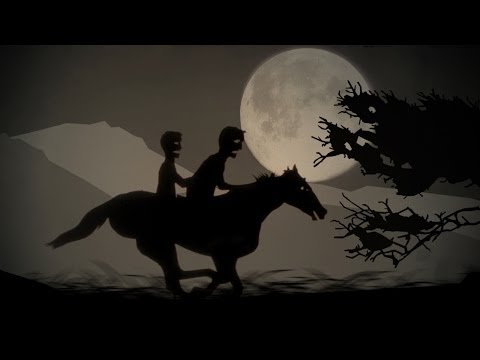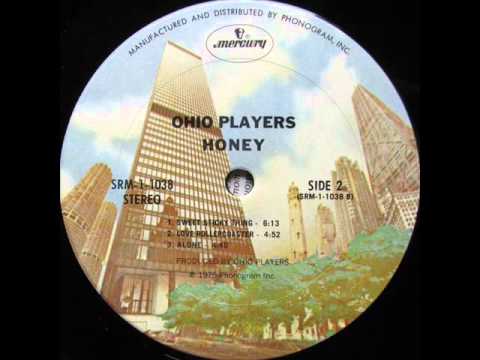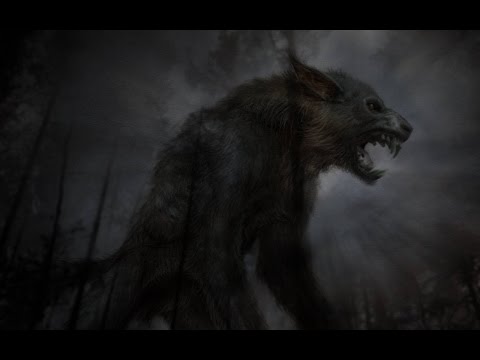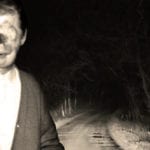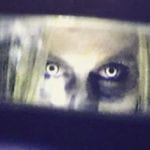Some songs, however, have more horrifying tales to tell. Here are some lesser-known myths hidden in 10 of the most cryptic songs ever written. 10 Famous Urban Legends Come To Life
10 The Forest Ogre
“The Erlking”
In 1782, young German poet Johann Wolfgang von Goethe wrote a ballad that soon launched a terrifying urban legend. Entitled “The Erlking,” the musical piece tells the story of a sinister creature who preys on travelers and children. Watch this video on YouTube Also known as the “King of Alders,” this forest monster is said to be a mistranslation of the original Danish “elf king.” Still, it has remained a haunting reminder of our childhood fears and the dark underworld hiding in the jungles. Legend has it that a man was riding on a horse with his young son one eerie night. As they passed through the dark corners of the forest, the young boy suddenly heard whispers from the unknown. Terrified, he told his father about the ominous sign. However, the father reassured his child that it was just the wind “rustling with the dead leaves.” The voice grew louder. But with his father ignoring him, the boy had no other choice. As they finally reached home, the father got the shock of his life. He found his poor son lifeless, with his soul allegedly consumed by the Erlking.[1] The story of the malevolent creature soon found its way into different communities and folk legends. In Dartmoor, for instance, a demon huntsman named Dewer is known to kill innocent children, hide them in sacks, and deliver the corpses straight to their parents. Another Erlking-inspired child killer is Ireland’s Tuatha De Danann, an evil creature known for leaving changelings in cradles to replace the poor infant victims.
9 Devil’s Dance
“Asereje” (“The Ketchup Song”)
In 2002, Spanish girl trio Las Ketchup conquered the international music scene with an unexpected hit. The song “Asereje” (“The Ketchup Song”), accompanied by awkward dance steps, became one of the best-selling singles of all time. But not long after it became an overnight sensation, rumors of backmasking and satanic references began to emerge. It all started when an email message—allegedly from a newspaper in Chihuahua, Mexico—exposed hidden messages behind the song’s lyrics. The controversy focused on two major areas: the title and the song’s lead character named Diego. If broken down and translated into English, “Asereje” also means “a being of heresy.” On the other hand, the alternative title, “Ketchup,” can be divided into two parts: “Up” (meaning “heaven”), and “chet” (loosely translated as “dung” or “sh–t”). When combined, the resulting word can mean “heaven is sh–t” or a direct attack on the sky. Backmasking also applies to the rest of the lyrics—allegedly to conceal clues which describe Diego as Satan’s messenger.[2] The singers denied the rumors and repeatedly said that the song was based on the 1979 rap hit “Rapper’s Delight” by Sugarhill Gang. Turns out, Asereje is an example of mondegreen, in which a foreign song is reinvented due to a linguistic difference. However, some international groups didn’t buy these explanations. In Dominican Republic, Mango TV banned all Asereje video clips. Iglesia ni Cristo (INC), an influential Christian sect in the Philippines, followed suit by preventing all its members from listening to the controversial song.
8 Texas Serial Killer
“Possum Kingdom”
Possum Kingdom Lake is a man-made body of water near the Dallas-Fort Worth area. It had remained an uneventful fishing spot until alternative rock band Toadies put a bizarre twist on its name. Watch this video on YouTube In the mid-1990s, the band hit it big with their single “Possum Kingdom,” inspired by a string of creepy events linked to the lake. Lead vocalist Vaden Todd Lewis, the son of a preacher, wrote the song in a way that opens it up to various interpretations. One theory suggests that “Possum Kingdom” recounts the story of a serial killer who lured young girls into his boathouse. Legend has it that he would rape and murder his victims inside the boathouse which supposedly still exists within the lake. Another account revealed that the song was loosely based on a kidnapping and killing spree that happened near the Possum Kingdom Lake during the early 1980s. Local authorities allegedly hid all evidence of the past crimes to avoid turning off the tourists who frequented the lake. In 1995, RIP Magazine interviewed the band to further explore the urban legends surrounding their song. Although the story was a mishmash of true events and folk legends, Lewis admitted that the lake holds a certain enigma.[3] He also shared the true story of a local stalker who had a strange habit of peeping into windows and breaking into people’s houses. The lake is also home to a popular spot—aptly named “Hell’s Gate”—where some tourists either went missing or died from drowning.
7 Ester’s Last Scream
“Love Rollercoaster”
The Ohio Players’ 1975 album, Honey, gained notoriety for two reasons: its provocative cover art and a creepy story hidden underneath. Legend has it that a woman was viciously murdered while the group was recording the album. As the story goes, the victim’s hair-raising scream can be heard between the first and second verses of the song “Love Rollercoaster.” Several versions of the urban legend came out afterward. One story revealed that the scream actually came from the album’s cover model, Ester Cordet. Rumor has it that she was required to wear an acrylic substance that looked like real honey during the photo shoot. However, some of the staff removed the paint rather hastily, tearing off Ester’s skin. She screamed—and eventually died—from the agonizing pain caused by the injury. Other stories, however, claimed that Ester was raped and murdered while the group was busy recording the album. There were also other sources suggesting that the victim was a cleaning woman stabbed to death by a stranger outside the recording studio.[4] But members of the band denied the rumors once and for all. Turns out, keyboardist Billy Beck just wanted the listeners to relive the thrilling experience of a rollercoaster ride. So he belted out a diva-like scream (yes, it came from a dude), hitting the high notes the way Minnie Riperton did.
6 The Blood Libel
“Sir Hugh” (aka “The Jew’s Daughter”) (Child Ballad No. 155)
“Sir Hugh” (aka “The Jew’s Daughter”) is a traditional British folk song dating back to a legend from the 12th century. It is a fine example of a ballad in which the lyrics tell a story of the song’s origin. But in this case, the background story falls between disturbing and macabre. The song originated from a dark blood ritual considered to be a common practice among ancient Jews. To celebrate the Easter holiday, they allegedly murdered Christian infants and mixed the blood with unleavened bread (aka “matzo”). This bloody murder was also mentioned in an English variation of the song where a child named “Hugh of Lincoln” was purportedly killed by Jews in 1255.[5] Later, “Sir Hugh” (aka “The Jew’s Daughter”) began to popularize the legend in other countries, including the US. In fact, the song, without its anti-Semitic references, is said to have inspired another recurring legend called “The Mutilated Boy.” In this story, young boys were allegedly castrated and left bleeding to death inside the comfort rooms of shopping malls. The culprits belonged either to a homosexual gang or a certain minority group who committed the crimes as part of their initiation rites. 10 Creepy And Outrageous Urban Legends That Turned Out To Be Completely True
5 Ode To The Black Plague
“Ring Around The Rosie”
Most people remember “Ring Around the Rosie” as a simple playground nursery rhyme. But according to legends, this song contains direct references to one of humanity’s darkest periods. Its origin dates to 1347–1350, when an estimated 25 million people died from bubonic plague. Critics disagree, indicating that it was only in 1881 that “Ring Around the Rosie” first appeared in print. Still, the words from the song are strikingly relevant if put in the context of the Black Plague.[6] The “ring around the rosy” refers to one of the first signs of the bubonic plague: a reddish ring surrounding a rosy bump in the skin. At that time, people believed that the epidemic was airborne and that putting posies (flowers), incense, or scented oils into someone’s pocket would help neutralize the “foul air.” The third line “ashes, ashes” is said to be an imitation of the sneezing sound. Again, this is strangely accurate as sneezing and coughing are two of the fatal final symptoms of bubonic plague. The final statement obviously refers to the massive death toll caused by the epidemic. So, is it really an ode to the Black Plague? Turns out, there are a gazillion versions of the song existing today. Some of them—including William Wells Newell’s 1883 version—even lack the last two phrases linking to the Black Plague. Whether or not the creepy version of the song predates the rest is still unknown.
4 The Kleenex Curse
“It’s A Fine Day”
Released in 1983, “It’s a Fine Day” is a classic song written by Edward Barton in collaboration with his then-girlfriend Jane Lancaster. It’s basically a feel-good song popularized by a Kleenex commercial that aired in Japan in the mid-1980s. Looking back, the ad was something you wouldn’t expect from a company selling tissues. It featured a red baby demon sitting alongside a beautiful actress, later identified as Keiko Matsuzaka. They played the English (and probably the creepiest) version of “It’s a Fine Day” in the background—something that only some Japanese audience members could understand. Soon enough, a very dark urban legend was born. Rumor has it that local TV stations received multiple complaints from people who found the commercial too disturbing. Some even claimed that “It’s a Fine Day” originated from a German folk song and possessed a demonic curse. Other stories are even more unforgiving. Supposedly, by nighttime, the voice in the commercial would suddenly change into a raspy version of an older woman and bring bad luck to anyone who heard it. The people directly involved in the commercial were not spared, either. After the initial airing, all the staff and actors purportedly met unfortunate fates one by one. For instance, the actor who portrayed the baby ogre died from a sudden organ failure. Depending on the version of the story, Keiko Matsuzaka either ended up in a mental institution or hanged herself. Other stories claim that Matsuzaka is still alive today but gave birth to a strange, demonic infant.[7]
3 Hungarian Suicide Song
“Gloomy Sunday”
We’re all familiar with depressing songs driving some people crazy. The premise is the same for “Gloomy Sunday” except that it is deadlier than all other melancholy songs combined. Its original Hungarian version, “Szomoru Vasarnap,” was written by composer Rezso Seress and lyricist Laszlo Javor. The song tells the story of a depressed woman who is thinking of ending her life after the loss of her lover. Upon release, the song was moderately successful. It wasn’t until 1936 that it gained sudden notoriety. The Budapest police department reported at least 18 suicides directly linked to “Gloomy Sunday.” One of the fatalities was shoemaker Joseph Keller. According to reports, his suicide note included the lyrics of the song. Other victims listened to the song either from a recording or a Gypsy band before taking their own lives. Although no known suicide related to “Gloomy Sunday” has been recorded in the US, as many as 200 cases worldwide were linked to the song’s disturbing contents. Most of the victims were young jazz fans who allegedly went into deep depression after listening to Billie Holiday’s 1941 rendition. Another story tells of how Javor’s breakup with his girlfriend inspired him to write the song. Sadly, the girl ended up poisoning herself and left a note with only two words: “Gloomy Sunday.” Reszo Seress was not spared from the curse. In 1968, he jumped to his death from his Budapest apartment allegedly due to his failing career. He was 68 years old.[8]
2 Game Of Death
“Kagome, Kagome” (“Circle You, Circle You”)
“Kagome, Kagome” is a nursery rhyme usually sung in a popular Japanese children’s game. By simply looking at the lyrics, one can conclude that “Kagome, Kagome” is one of the most cryptic songs ever written for children. Several interpretations were made to explain its origin. Most involve grim details ranging from murder to a bloody treasure hunt. In one story, the “bird in a cage” is seen as a direct reference to a prisoner waiting to be executed. The “evening of the dawn” has been interpreted as “the dawn patrol,” a person assigned to escort convicted prisoners on their final walk. Another version claims that “kagome” is derived from kagomi (“pregnant woman”). Legend has it that during the time the song was written, an unborn child (i.e., the “bird in a cage”) was seen as a threat to in-laws greedy for an inheritance. So they either pushed the mother down the stairs or used other methods to forcibly abort the baby. One of the most compelling interpretations, however, reveals that “Kagome, Kagome” holds the clues to finding a lost Tokugawa treasure. In February 1867, Prince Mutsuhito replaced the Tokugawa clan to become the new emperor of Japan. However, for the new empire to rebuild, it had to depend on the gold reserves stored in the government’s vault. Too late, they discovered that all the treasure was gone. Oguri Tadamasa, a former finance governor of the Tokugawa clan, purportedly buried the treasure. Unfortunately, he was beheaded during the fall of Edo, taking all the secrets to his grave.[9] “Kagome, Kagome” suggests that the treasure might be buried somewhere in Nikko Toshogu Shrine. Despite excavation attempts, no link to the Tokugawa treasure has been found yet.
1 The Michigan Dogman
“The Legend”
As part of a 1987 April Fools’ Day celebration, deejay Steve Cook of WTCM-FM radio wrote a song called “The Legend.” As the goal was to intrigue his listeners, he wrote the lyrics by fabricating a story of a half-man, half-dog monster roaming the Michigan forests. He even added fascinating details such as the seven-year interval between reported “Dogman” sightings. Written in a traditional Native American style, the ballad hit the airwaves just in time for the holiday. However, Cook later found out that the joke was really on him. After playing the song, the WTCM-FM radio station received an overwhelming number of phone calls. The majority of the callers shared their own chilling tales of encountering a real “Dogman.” Although most eyewitnesses didn’t know what to call it at first, the bizarre creature they had once encountered shared the same description as that of Cook’s fictional Dogman. Such was the case with Robert Fortney, a resident of Cadillac, Michigan, whose first and last Dogman encounter dated back to the late 1930s. Fortney described the humanoid creature as a huge, black canid with “slanted, evil eyes and the hint of a grin.”[10] Another notable encounter happened in Big Rapids, Michigan, during summer 1961. One night, a man was sitting on a porch across from the manufacturing plant where he worked as a night watchman. At exactly 3:00 AM, he saw the frightening figure of a tall, brown-haired creature walking toward the driveway. It alternated between walking on its four legs and standing up on two. A photography buff, the man instinctively took his Kodak Signet 35mm camera and captured a few shots of the mysterious creature. At that point, the Dogman rushed toward the woods, leaving no trail behind. To this day, the photo remains the strongest evidence yet that could prove the Dogman’s existence. 10 Bone-Chilling Urban Legends
